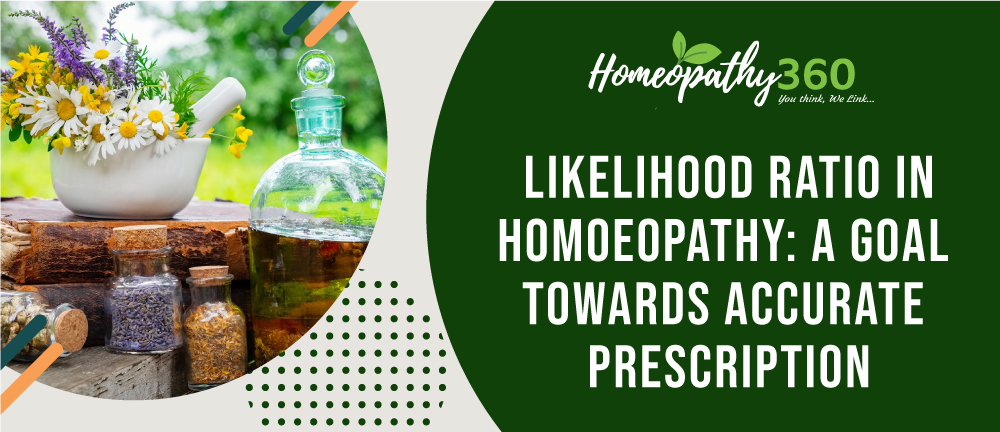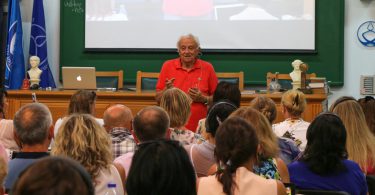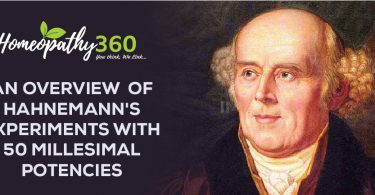
Background: Statistical research is an integral part of science which contributes a lot in growth and development of science. Research in homoeopathy brings many new methods to improve our practical skills as well as scientific explanation of existing data. Likelihood ratio is one the new emerging concept among homoeopath for obtaining verification of symptoms that will ultimately ends in accurate prescription but many homoeopaths are unaware about it. So, it is imperative to understand this research oriented aspect of homoeopathy with critical view of mind.
Materials and method: A literature search was conducted using various data sources like pubmed, web of science, google search engine and other peer review articles from publication related to homoeopathic system which explores data regarding likelihood ratio.
Result and conclusion: This study explores a role of likelihood ratio in homoeopathy as well as current status of likelihood ratio in homoeopathy.
Keywords: Likelihood ratio, homoeopathy, research, verification, prescription
Abbreviations: LR-likelihood ratio, Se-sensitivity, Sp- specificity, CI- confidence interval
Introduction:
As medical science, homoeopathy needs scientific outlook for its continuous development to attain perfection. Likelihood ratio named epidemiological tool explores many scopes in homoeopathy to verify its symptomatic data. Likelihood ratio is a part of statistical research which deals with symptoms, diagnosis and various investigations. As a physician, one must know about various researches and techniques in medical field to maintain our place in medical science. Various researches were there in past that explore the detail data related to likelihood ratio and its utility in medical science. Application of likelihood ratio in homoeopathy helps physician to use his clinical skill at higher level and useful to carry out some structural changes in repertory to discard unnecessary and ambiguous data.
Objective of study:
Primary objective of study was, “to explore knowledge regarding likelihood ratio in medical science” and secondary objective was “to understand utility of likelihood ratio in homoeopathy with critical view of mind.”
Materials and method: A literature search was conducted using various data sources like pubmed, web of science, google search engine and other peer review articles from publication related to homoeopathic system which explores data regarding likelihood ratio.
Inclusion criteria: 1) All the literature regarding likelihood ratio in homoeopathy were included to examined the data. 2) Articles regarding likelihood ratio in medical science were collected with time period from 1990 to 2021.
Exclusion criteria: Published articles regarding likelihood ratio before 2001 were excluded from the study.
Observation and result:
Likelihood ratio in medical science:
Likelihood ratio is known term for statistician and epidemiologist but lesser known among the physicians. Alexander Etz mentioned about concept of likelihood with the reference of Edward’s study in following way, “Edwards (1992) synthesized two statistical concepts— the law of likelihood and the likelihood principle—to define a likelihood axiom that can form the basis for interpreting statistical evidence.”(1, 2) It is very less used tool among physicians for clinical as well as diagnostic matter. Likelihood ratios have wide application in medical field, i.e. in symptoms, physical examination, laboratory tests, imaging procedures and scoring systems. Its concept revolves around the prior and posterior probability of Bayesian philosophy.
In psychological field, likelihood ratio was introduced as an alternative for null hypothesis testing for drawing statistical inferences. Its flexibility and simplicity for drawing inferences makes it good alternative for hypothesis testing.(3) Difference between conditional probability and likelihood ratio is in interpretation of what is fixed and what can vary. In case of probability, hypothesis is fixed and data may be varying while in likelihood ratio data is fixed and hypothesis can vary. (2)
LR of any clinical finding is the probability of that finding in patient with disease divided by the Probability of the same finding in patient without disease. For example, among patients with abdominal distension who undergo ultrasonography, the physical sign “bulging flanks” is present in 80% of patients with confirmed ascites and in 40% without ascites (i.e. distention from fat or gas). The LR for “bulging flanks” in detecting ascites, therefore, is 2.0 (i.e. 80% divided by 40%). Similarly, if the finding of “flank tympany” is present in 10% of patient with ascites but in 30%with distention from other causes, the LR for “flank tympany” in detecting ascites is 0.3(i.e. 10% divided by 30%) (4)
In order to understand likelihood ratio for application in clinical practise, one has to be familiar with some statistical terms like specificity and sensitivity. Its application is not only limited to the tests that having result in dichotomous form but also applicable for the tests with results in continuous form (example, blood pressure) or multiple ordinal level (fine needle biopsy of breast masses). (5)
The pretest probability can be combined with the LR to generate a posttest probability, such that a high pretest probability coupled with a high LR will generate a very high posttest probability. Hence, a practitioner who was reasonably confident about a correct diagnosis before the test would be much more confident after obtaining the positive results of a test that had a high LR. The opposite of this scenario would occur if a low pretest probability and low LR were involved. (6)
Positive LR+ = Se/ (1-Specificity) and Negative LR- = (1-Sensitivity)/Sp
Likelihood ratio test (Wilks test) is done with the help of various calculators and nomogram (pre- and post-test probability). Negative likelihood ratio is also important for clinical diagnosis to minimise false positive findings. (7)
Likelihood ratio in homoeopathic field:
Likelihood ratio in homoeopathic field was introduced as epidemiological tool to help in evaluation of the homoeopathic notions like keynotes and peculiar and characteristic symptoms. Likelihood of ratio helps physician to understand the probability that medicine will work if certain symptom is present or absent which is application of likelihood ratio at the symptom level to get more accurate prescription. (8) Application of likelihood ratio in homoeopathy will help to improve present structure of materia medica and repertory.
There are following list of articles in homoeopathic literature that have reported use of LR
| Name of article | Objective and methods | Results | Conclusion |
| Prevalence and Likelihood ratio of six objective signs among good responders to Natrum muriaticum: multi centre observational assessment(9) | To estimate LR of the six objective signs attributed to the homoeopathic medicine, Natrum muriaticum. | Data from 36 good responders to Natrum muriaticum and 836 general population patients were compared. It was found statistically significant positive LR (CI-95%) for signs such as lip cracks(1.94),recurrent herpes (2.29), hairline eruption(2.07) and dry hands(2.13) | Objective signs with significant positive LR might increases the reliability of homoeopathic prescription. Further studies are warranteed to confirm the validity of this approach. |
| Prevalence and likelihood ratio of symptoms in patients with good therapeutic response to Lycopodium clavatum. A retrospective study(10) | To investigate the prevalence and LR of the symptoms commonly attributed to the homoeopathic medicine Lycopodium clavatum. Secondarily, to answer the question if experienced Homoeopaths could intuitively infer which symptoms of this medicine are. | 202 Lycopodium clavatum cases and 550 non Lycopodium clavatum cases (752) were included for analysis. 22 symptoms were confirmed as pertaining to Lycopodium clavatum’s seminology: (prevalence %, LR) Among 22 symptoms few are- contemptuous (3.3; 6.7) urinary stone history (2.7; 5.4), egotism (5.6; 3.6) etc. Surveyed homoeopaths’ intuitive inferences correlated well with symptoms’ prevalence but not with their LR | Lycopodium clavatum’s main symptoms are well known by homoeopaths, but their knowledge correlates well with the symptoms’ prevalence and not with their LR. Retrospective Assessment of Prevalence and LR of symptoms in good responders might be a means for better selection of symptoms for prospective studies. |
Apart from above mentioned articles, Evaluation of a prognostic homoeopathic questionnaire for women with premenstrual disorders(11) and assessment of likelihood ratio for four contact dermatitis symptoms of Vinca minor and having conclusion that itching amelioration in open air with LR 3(12) are worthy to study for understanding the LR.
Some important findings in research study related to LR help us to understand the position as well as role of LR in homoeopathy.
As the data related proving are increasing day by day in Homoeopathy since its origin. One article suggests that, “we should develop new criteria for entering or discarding entries in the repertory. We probably need a different way of handling statistical uncertainty than in hypothesis testing. Symptoms should be more clearly defined. The validity of our scales measuring cure should be validated. Most of the questions we presented here have been issues as long as repertories have existed, but were avoided. To do it right we should handle these questions properly.”(13)
Application of LR in Homoeopathic field opens a new path to verify the symptoms of remedies and ultimately changes on the typeface in repertory. Rare remedies are homoeopathic medicines with little data. If there is little experience with a medicine, its symptoms are not frequently confirmed. This means that there is no emphasis for these symptoms in the repertory, even if the symptoms are characteristic for the remedy.(14) Here more importance given to so called polychrest remedies than this rare remedies. Application of likelihood ratio will help to overcome this difficulty in repertory and this will change our structure of repertory as well as our repertorisation and prescriptions.
Introducing LR to the repertory will not only change its content but also its use. Because of the altered use we should consider structural updating. Entries of medicines in the repertory must reflect the importance of the symptom in relation to the remedy, not the occurrence of the symptom in proving and casuistry. This new repertory will increase usefulness and reliability, especially of large rubrics. It will enable us to make more reliable predictions about the number of symptoms we need in one case and the curative potential of a medicine. (15)
Research study related to assessing LR of symptoms like loquacity, fear of snakes, desire for coffee(16) and fear of death with its utility in repertorisation are good source to understand concept and utility of LR in homoeopathy.
Discussion: Likelihood ratio is good statistical tool to improve the diagnostic skill of physician in medical field. Knowledge about its concept of pre-test probability and post-test results helps physician to practice more skillfully in his occupation.
In homoeopathic literature, all the symptoms are not yet thoroughly verified which may cause difficulty at clinical level. Application of LR in homoeopathy to calculate LR of symptoms needs homoeopathic data (to get pre-test probability), clinical skills for prescription according to totality (there may be chances of bias at this level) and analysis of responses coming after prescribed medicines. This above describe method explore many new data for improvement at different levels in homoeopathy.
In homoeopathic science, frequently used medicines are over rated and seldom used medicines are under rated. There is no clear system, so we have to overcome the problem by proper assessment of the prevalence of symptoms in populations responding to homoeopathic medicines. (17) LR of symptoms in remedies will be a good assessment to overcome these problems.
Conclusion: In spite of giving good results and gentle healing since many decades, homoeopathy still struggles a lot in medical science to establish its plausibility. Acceptance of the statistical tools and its application in our science will help us to cultivate a new thought process towards research in field of homoeopathy. It will also explore many new possibilities to understand some hidden treasure like aspect of our science. Evaluation with critical mindset towards application of this method help us to understand its merits and demerits in homoeopathy.
References:
- Edwards, A. W. F. Likelihood. Baltimore, MD: Johns Hopkins University Press;(1999) available from: http://cmq.esalq.usp.br
- Etz A. Introduction to the concept of likelihood and its Applications. Sage Journals [internet].2018 March 7; vol.1 issue 1: pg 60-69. Available from: https://doi.org/10.1177/2515245917744314
- Glover, S., Dixon, P. Likelihood ratios: A simple and Flexible statistic for empirical psychologists. Psychonomic Bulletin & Review [internet].11; 791-806 (2004). Available from: https://doi.org/10.3758/BF03196706
- McGee S. Simplifying Likelihood ratios. J Gen Intern Med. [internet]. 2002 Aug; 17(8): 647-650. Available from: doi:10.1046/j.1525-1497.2002.10750.x PMID-12213147
- Grimes D A., Schulz K.F. refining clinical Diagnosis with Likelihood ratios. The Lancet [internet].2005. 365(9469):1500-1505. Available from: https://doi.org/10.1016/S0140-6736(05)66422-7.
- Haneline M T. A review of the use of likelihood ratios in the chiropractic literature. J Chiropr Med [internet].2007 summer; 6(3):99-104. Available from: doi:10.1016/j.jcme.2007.04.008. PMID-19674703
- Yang WT, Parikh JR, Stavros AT, Otto P, Maislin G. Exploring the Negative Likelihood Ratio and How it can be used to Minimize False-Positives in Breast Imaging. AJR Am J Roentgenol.2018 Feb: 210(2):301-306. doi: 10.2214/AJR.17.18774. Epub 2017 Nov.22 PMID: 29166150.
- Rutten ALB, Stolper CF, Lugten RF, Barthels RJ. ‘Cure’ as the gold standard for likelihood ratio assessment: theoretical considerations. Homoeopathy 2004; 93: 78–83. Available from: https://doi.org/10.1016/j.homp.2004.03.001
- Eizayaga JE, Waisse S, Rutten L, Klein-Lassnsma C, Motura A. Prevalence and Likelihood Ratio of Six Objective sign among Good Responders to Natrum Muriaticum: Multi-centre Observational Assessment. Homoeopathy.2021 Feb; 110(1): 36-41. PMID-33482668
- Eizayaga JE, Pozzi MI, Canan MC, Saravia L. Prevalence and likelihood ratio of symptoms in patients with good therapeutic response to Lycopodium Clavatum. A retrospective study. Homoeopathy. 2016 Feb; 105(1):78-83. PMID-26828001
- Klein-Laansma CT, Rutten ALB, Jansen JPCH, Van Wietmaeschen H, Jong MC. Evaluation of a prognostic homoeopathic questionnaire for women with premenstrual disorders. Complement Med Res.2018; 25(3): 173-182. PMID-29550829
- Bagchi S, Nayak C, Rutten L,Koley M, Saha S, Roy M, Abbas SJ, Ghosh S, Halder S, Wani GN, Mir AA, Bhat SA. Assessment of Likelihood Ratio for Four Contact Dermatitis Symptoms of Vinca Minor. Homoeopathy. 2018 08; 107(3):209-217. PMID-29783275
- Rutten ALB, Stolper CF, Lugten RF, Barthels RJ. New repertory, new considerations. Homoeopathy 2008; 97: 16–21. doi:10.1016/j.homp.2007.11.004, available online at http://www.sciencedirect.com
- Stolper CF, Rutten AL, Lugten RF, Barthels RJ. Improving homoeopathic prescribing by applying epidemiological techniques: the role of likelihood ratio. Homoeopathy 2002; 91: 230–238. PII: S1475-4916(02)00108-X, available online at www.idealibrary.com
- Rutten ALB, Stolper CF, Lugten RF, Barthels RJ. Repertory and likelihood ratio: time for structural changes. Homoeopathy 2004; 93: 120–124 doi:10.1016/j.homp.2004.04.005 available online at http://www.sciencedirect.com
- Rutten ALB, Stolper CF, Lugten RF, Barthels RJ. Is assessment of likelihood ratio of homoeopathic symptoms possible? A pilot study. Homoeopathy 2003; 92: 213–216 doi:10.1016/j.homp.2003.08.015 available online at http://www.sciencedirect.com
- Rutten ALB, Stolper CF, Lugten RF, Barthels RJ. A Bayesian perspective on the reliability of homoeopathic repertories. Homoeopathy 2006; 95: 88–93. doi:10.1016/j.homp.2006.01.001, available online at http://www.sciencedirect.com
About the Author





